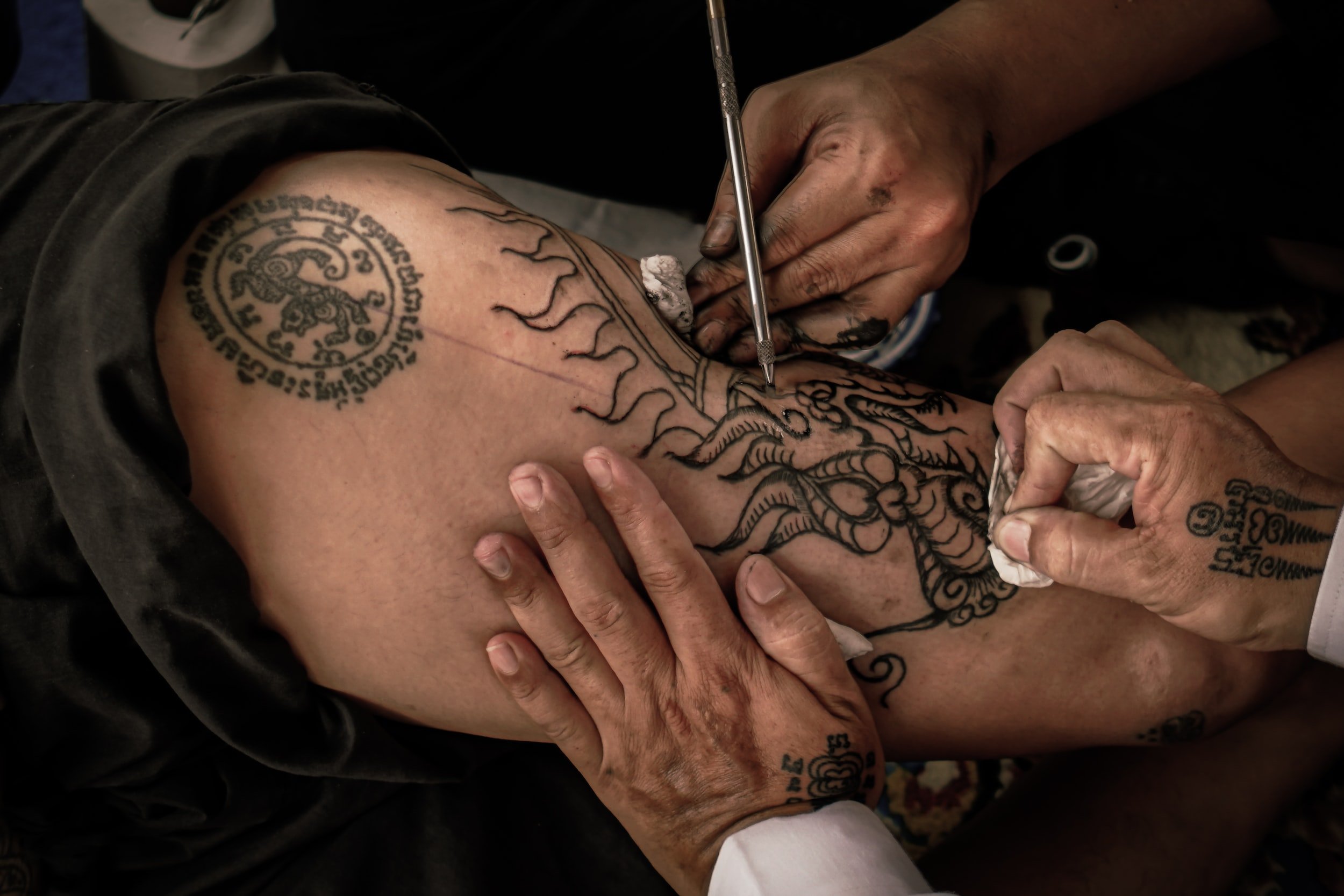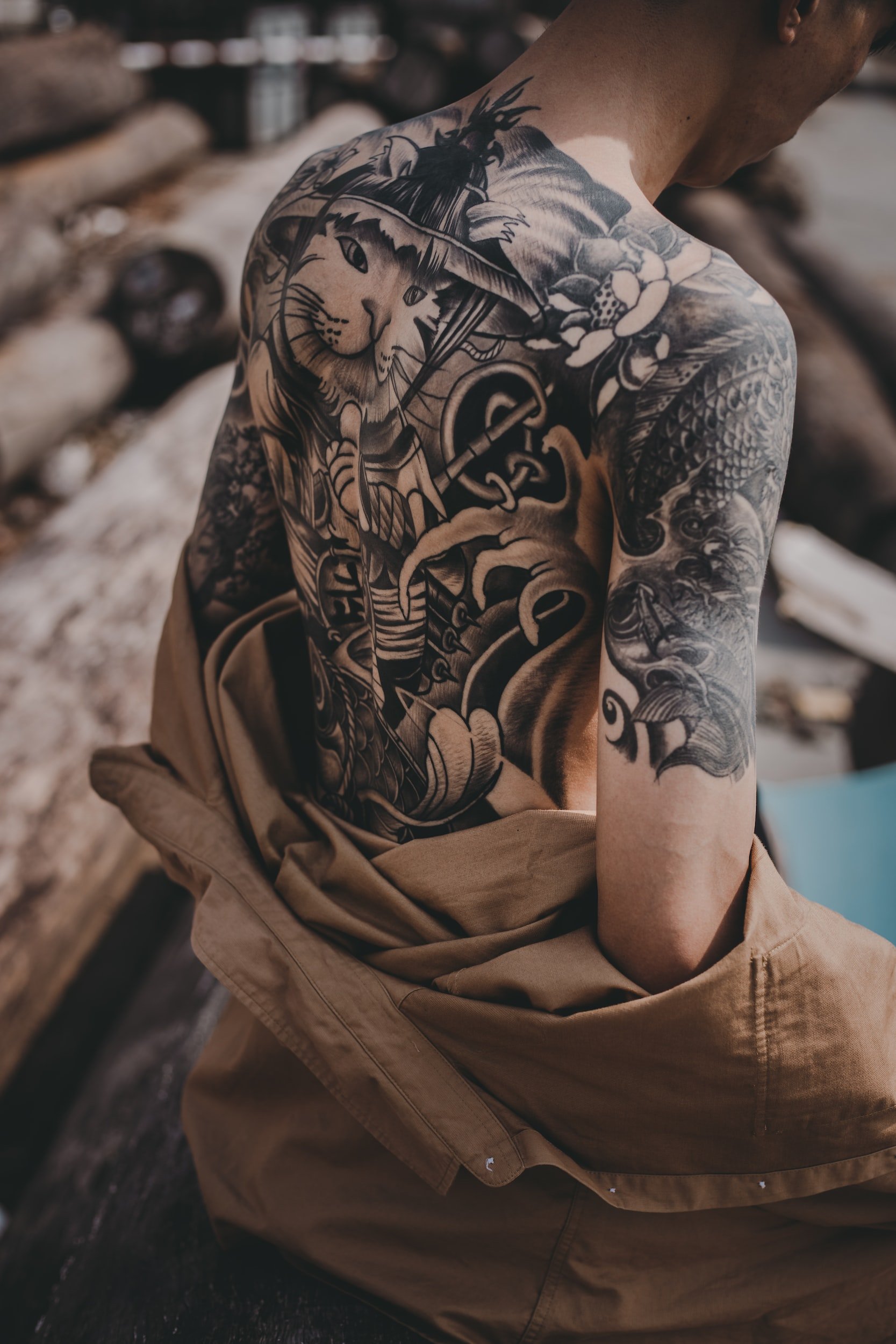Japanese Traditional Tattoo: A Guide to Its Rich History & Meaning
Tattoos have been a form of expression for thousands of years, but few styles have captured the imagination and passion of tattoo enthusiasts like traditional Japanese tattoo designs. These intricate, vibrant, and meaningful works of art have captivated people around the globe, inspiring countless individuals to permanently etch these iconic symbols onto their skin.
But before you decide to take the plunge and commit to a traditional Japanese tattoo design, it's essential to understand the rich history and symbolism behind this ancient art form. In this comprehensive guide, we'll take you on a journey through the origins of Japanese traditional tattoos, the techniques used by the master artists, and the significance behind the captivating designs that have transcended time and borders.
The Origins of Japanese Traditional Tattoo
Japanese traditional tattoos, also known as irezumi, have a long and fascinating history. Evidence of tattoos in Japan dates back to the Jomon period, around 10,000 BCE, where clay figurines with tattoo patterns have been discovered. However, it was during the Kofun period (300-600 CE) that tattoos became popular among men as a symbol of bravery and strength.
During the following centuries, Chinese culture had a significant influence on the development of traditional Japanese tattoo designs. Chinese literature and art introduced mythical creatures like dragons and phoenixes, which became popular motifs in Japanese tattoos. Buddhist and Taoist beliefs also played a role, as symbols like the lotus flower and Buddha were incorporated into tattoo designs.
However, it was not until the Edo period (1603-1868) that tattoos became mainstream in Japan. At this time, Japanese tattoo artists began developing the traditional Japanese tattoo sleeve, a full-arm tattoo that often depicted stories or heroes from Japanese folklore or history. Elite samurais would often showcase their intricate, colorful tattoos as a symbol of their status and bravery, further fueling the popularity of the tattoo in Japanese society.
Despite its popularity, tattoos were officially banned in Japan during the Meiji Restoration in 1868, and they were associated with criminal gangs and anti-authority sentiment. However, the art of Japanese traditional tattoos continued and eventually resurfaced, especially after World War II, when tattoos became popular among allied servicemen stationed in Japan.
Today, Japanese traditional tattoos are recognized as a unique and intricate art form, with tattoo artists trained in traditional techniques and aesthetic principles. The traditional Japanese tattoo sleeve remains a popular choice for both Japanese and international tattoo enthusiasts, showcasing the rich history and cultural significance of this timeless art form.
The Art of Irezumi: Japanese Traditional Tattoo Techniques
Irezumi has been an integral part of the country's culture for centuries. One of the most popular traditional Japanese tattoos is the back piece, which often features intricate designs ranging from mythical creatures to deities and landscapes.
The traditional Tebori method, which involves hand-poking the ink into the skin using a series of carefully placed needles, has been used for centuries to create these elaborate, full-back designs. This technique requires a great deal of training and skill, as well as patience and a steady hand.
Although modern tattooing techniques have become more popular in recent years, many traditional Japanese tattoo artists still use the Tebori method to create their intricate designs. These skilled artisans are dedicated to preserving and perpetuating the traditional art form, which has been passed down through generations.
One of the most significant differences between traditional and modern tattooing techniques is the level of precision and detail that can be achieved with hand-poking. This method allows the artist to create incredibly intricate designs with a level of depth and shading that cannot be replicated with a machine.
Despite the challenges of hand-poking, many people still choose to get a traditional Japanese back tattoo because of the rich history and cultural significance behind them. These designs not only honor the traditions of Japan but also serve as a symbol of strength, resilience, and perseverance.
The Symbolism and Meaning behind Traditional Japanese Tattoo Designs
Traditional Japanese tattoos have caught the attention of art enthusiasts all around the world. Not only are they visually stunning, but they also hold a special significance in Japanese culture. One of the most popular designs is the traditional Japanese dragon tattoo.
The Japanese dragon is one of the most common mythical creatures found in traditional Japanese art. Unlike in other cultures, where dragons are often associated with danger and destruction, the Japanese dragon is seen as a symbol of strength, wisdom, and good luck. The dragon is often depicted with a long, slender body and sharp claws, and is said to possess the power of control over the elements of water and air.
In Japanese tattoo art, the dragon is often paired with other animals to emphasize its power and strength. These animals include tigers, koi fish, and phoenixes. Tigers symbolize courage, while koi fish represent perseverance and overcoming adversity. Phoenixes are known as beings of rebirth and transformation, and serve as a reminder of the cyclical nature of life.
Floral motifs are also a common feature in traditional Japanese tattoos. Cherry blossoms are one of the most popular motifs and are associated with the fleeting nature of life. Peonies are a symbol of wealth and prosperity, while chrysanthemums represent the family and loved ones that have passed on. The lotus flower is a powerful symbol of enlightenment and spiritual awakening.
In addition to animals and floral motifs, there are also many patterns in Japanese tattoo art that hold deep significance. Waves and water represent strength, resilience, and the potential for growth. Wind and clouds are associated with change and the unpredictability of life. Scales and armor serve as protection against the dangers of the world.
The Role of Tattoos in Japanese Society
Tattoos have a long and complicated history in Japanese society. For many years, tattoos were heavily stigmatized and associated with criminal organizations like the Yakuza. In fact, the word for tattoo in Japanese, Irezumi, is often used to refer specifically to Yakuza tattoos.
However, in recent years, attitudes towards tattoos in Japan have been changing. While there are still some negative connotations associated with tattoos, people are starting to view them more as a form of self-expression rather than a sign of criminal activity.
One of the most beautiful and skilled forms of tattoo art in Japan is the traditional Japanese tattoo sleeve. These full arm tattoos are highly detailed and often feature intricate designs like wind and clouds, scales and armor, and other traditional Japanese motifs.
While they're still not widely accepted in Japanese society, traditional Japanese tattoo art has been embraced by the global community. Many people from around the world travel to Japan specifically to get a traditional Japanese tattoo sleeve. In fact, there are even some tattoo artists who specialize solely in this type of art.
So, while the role of tattoos in Japanese society is still evolving, it's clear that traditional Japanese tattoo art has a special place in the hearts of those who appreciate its beauty and skill. And for those who want to experience it for themselves, getting a traditional Japanese tattoo sleeve is a powerful way to connect with this ancient and beautiful culture.
Caring for Your Japanese Traditional Tattoo
If you are lucky enough to have a traditional Japanese tattoo, then it is important to take care of it properly to ensure its longevity and vibrancy. Here are some tips to help you care for your tattoo and keep it looking its best:
1. Avoid direct sunlight: Japanese tattoos are often created with bright colors and intricate details, but direct sunlight can quickly fade and damage them. Try to keep your tattoo covered or in the shade as much as possible.
2. Keep it clean: It's important to keep your tattoo clean to prevent infection and preserve its appearance. Wash it gently with mild soap and warm water, pat it dry, and avoid rubbing or scrubbing the area.
3. Moisturize regularly: Keeping your tattoo moisturized is also essential for its preservation. Use a fragrance-free lotion or ointment to prevent dryness and peeling.
4. Avoid harsh chemicals: Avoid using harsh soaps, detergents, or other chemicals on your tattoo, as they can fade and damage the ink.
5. Stay healthy: Maintaining a healthy lifestyle, including avoiding excessive alcohol consumption and smoking, can also help prolong the life of your tattoo.
When it comes to finding Japanese traditional tattoo artists near me, it's important to do your research to find a reputable and skilled artist. Look for reviews and recommendations from other customers, and don't be afraid to ask for samples of their work or their portfolio. Remember that a Japanese traditional tattoo is a significant commitment, so take the time to find an artist who can create a design that you will love for a lifetime.
Frequently ASKED questions
-
A: There are several rules that govern these tattoos, which are deeply rooted in Japanese culture and aesthetics.
One of the most important rules is that traditional Japanese tattoos should cover large parts of the body, such as the back, chest, and arms. These tattoos often feature images of animals, mythological creatures, and nature, and are designed to flow seamlessly with the body's natural curves and contours.
Another important rule is that traditional Japanese tattoos should be done using a specific technique called tebori, which involves using a hand-held needle to puncture the skin and insert ink. This technique is considered more precise and less painful than modern tattooing methods.
In terms of subject matter, traditional Japanese tattoos typically feature motifs from Japanese folklore and mythology, such as dragons, tigers, koi fish, and samurai. These images are often accompanied by symbolic elements, such as cherry blossoms or waves, that represent different aspects of Japanese culture.
Finally, traditional Japanese tattoos are deeply symbolic and meaningful, and are often used to convey a person's personality, values, and life story. They are considered a form of self-expression and are deeply respected in Japanese culture.
-
A: The cost of a traditional Japanese tattoo can vary widely depending on the size, complexity, and experience of the tattoo artist. Generally, the cost for a small to medium-sized piece can start around $500 and go up to several thousand dollars for larger, more intricate designs. Additionally, some tattoo artists may charge by the hour, with rates typically ranging from $150 to $600 per hour. It's important to note that Japanese tattoos require a great deal of skill and expertise, and it's recommended to do thorough research and choose a reputable artist who specializes in this style to ensure the best possible results.
-
A: A traditional Japanese tattoo, also known as Irezumi, is a form of body art that originated in Japan and has a history dating back thousands of years. It typically consists of intricate designs featuring mythological creatures, animals, flowers, and other motifs that are symbolic of Japanese culture and beliefs. These tattoos are usually large, and cover the entire back, arms, or legs. Traditional Japanese tattooing is a highly skilled and labor-intensive process that involves using hand-held tools to puncture the skin and inject ink beneath the surface. The designs are often created by skilled tattoo artists who have undergone years of apprenticeship under a master, and the process can take many sessions to complete.
READ MORE…
Read up our article on uncovering the rules of Japanese tattoo culture.
Check out our article on Japanese tattoos - traditional strength and beauty.
Discover the meaningful art of Japanese traditional tattooing.
Check out these Japanese-inspired tattoos: their meanings and how to get them.




